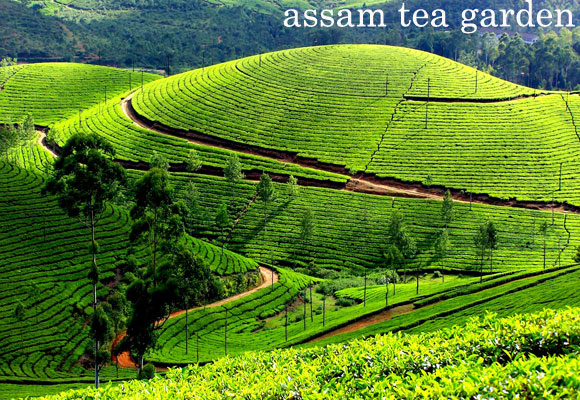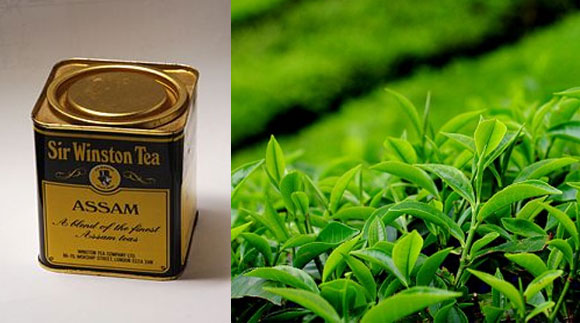Home :: Seven Sisters India :: Assam Tourism
Assam Special
The tea plant is grown in the lowlands of Assam, unlike Darjeeling and Nilgiris, which are grown in the highlands. The Assam tea bush grows in a lowland region, in the valley of the Brahmaputra River, an area of clay soil rich in the nutrients of the floodplain. The climate varies between a cool, arid winter and a hot, humid rainy season—conditions ideal for growing tea. Because of its lengthy growing season and generous rainfall, Assam is one of the most prolific tea-producing regions in the world. Each year, the tea estates of Assam collectively yield approximately 1.5 million pounds (680,400 kg) of tea.

Assam tea is generally harvested twice, in a "first flush" and a "second flush." The first flush is picked during late March. The second flush, harvested later, is the more prized "tippy tea," named thus for the gold tips that appear on the leaves. This second flush, tippy tea, is sweeter and more full-bodied and is generally considered superior to the first flush tea. The leaves of the Assam tea bush are dark green and glossy and fairly wide compared to those of the Chinese tea plant. The bush produces delicate white blossoms.
Tea Production:
The cultivation and production of Assam tea in the first two decades (1840–1860) were monopolised by the Assam Company, which operated in districts of Upper Assam and through the labour of the local Kachari labour. The success of the company and the changes in colonial policy of offering land to the tea planters (Fee simple rules) led to a period of boom and expansion in the Assam tea industry in the early 1860s, but these could not necessarily be translated into a dramatic shift in production (from China to Assam) due to the "makeshift" nature of plantations, poor conditions of life on plantation (huge rates of mortality and desertion), and also at times the presence of pure speculative capital with no interest in tea production.
View Larger Map
Export to London:
The intervention of the colonising British East India Company was realised through a body of 'experts' constituting the Tea Committee (1834) to assess the scientific nature and commercial potential of Assam tea. The adherence of the members of the committee to the Chinese ideal (in terms of the plant and the method of manufacture) led to the importation of Chinese tea makers and Chinese tea seeds to displace the "wild" plant and methods obtained in Assam. After a period, however, a hybridized version of the Chinese and Assam tea plants proved to be more successful in the Assam climate and terrain.

By the late 1830s, a market for Assam tea was being assessed in London; and the positive feedback led the East India Company to inaugurate a long drawn process of dispossession of agricultural land and forest commons through the infamous 'Wasteland Acts' allowing significant portions of the province by private capital to be transformed into tea plantations. The close symbiotic relationship of the colonial state and plantation capitalism through the colonial period is most succinctly captured in the term Planter-Raj.



